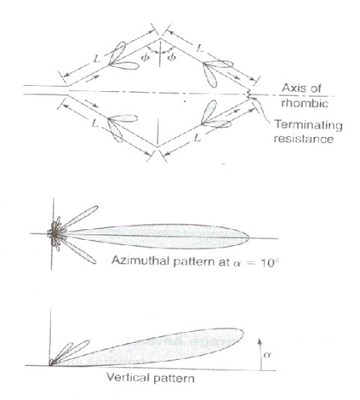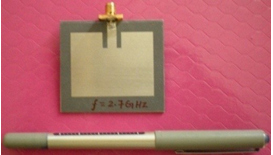Comparison of far fields of small loop and short dipole:
The electrically small loop antenna is the dual antenna to the electrically short dipole antenna when oriented as shown in next slide. That is, the far-field electric field of a small loop antenna is identical to the far-field magnetic field of the short dipole antenna and the far-field magnetic field of a small loop antenna is identical to the far-field electric field of the short dipole antenna
Given that the radiated fields of the short dipole and small loop antennas are dual quantities, the radiated power for both antennas is the same and therefore, the radiation patterns are the same. This means that the plane of maximum radiation for the loop is in the plane of the loop. When operated as a receiving antenna, we know that the short dipole must be oriented such that the electric field is parallel to the wire for maximum response. Using the concept of duality, we find that the small loop must be oriented such that the magnetic field is perpendicular to the loop for maximum response. The radiation resistance of the small loop is much smaller than that of the short dipole. If we compare the far fields of the infinitesimal dipole and the electrically small current loop with electric and magnetic currents, we find pairs of equivalent sources and dual sources.
If we compare the far fields of the infinitesimal dipole and the electrically small current loop with electric and magnetic currents, we find pairs of equivalent sources and dual sources. The infinitesimal electric and magnetic dipoles are defined as dual sources since the magnetic field of one is identical to the electric field of the other when the currents and dimensions are chosen appropriately. Likewise, the small electric and magnetic current loops are dual sources.We also find from this discussion of dual and equivalent sources that the polarization of the far fields for the dual sources are orthogonal. In the plane of maximum radiation (x-y plane), the four sources have the following far field polarizations.
infinitesimal electric dipole → vertical polarization
infinitesimal magnetic dipole → horizontal polarization
small electric current loop → horizontal polarization
small magnetic current loop → vertical polarization
-------------------------
Article by
St.Mary's Group
ECE Dept.


